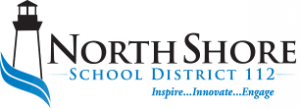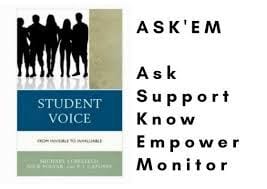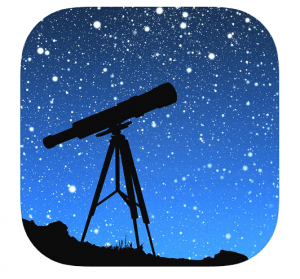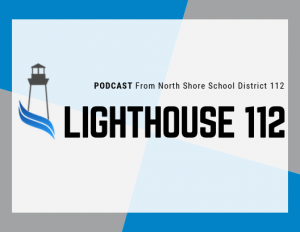“Believe you can and you’re halfway there.”
– Theodore Roosevelt
Artificial intelligence (AI) is an area of computer science that emphasizes the creation of intelligent machines that work and react like humans. Some of the activities computers with artificial intelligence are designed for include: Speech recognition. Learning.
What is Artificial Intelligence (AI)? – Definition from Techopedia
So today I’m walking my dog Harley around 6:00am; it’s still dark outside where I live at 6:00am (latitude 42.187665, longitude -87.804106). I started thinking about the relevance of technological tools, learner interest, opportunities to learn and the acquisition of knowledge. In doing all of this I was enlisting the support of Artificial Intelligence to check my thinking — to validate or refute my hypothesis — to think and learn. Are we helping our learners take full advantage of the tools and technology at our fingertips — are we showing the relevance of tools and are we affording our students choice to show what and how they learn??
GPS was made public in about 2000 (it had been around militarily for decades, since the 1960s). I’m using 18 year old technology tools to determine my location writing on a blogging platform that’s about 20 years old, describing some technology that was “discovered” in the late 1940s and early 1950s. So why don’t educational institutions for the masses (public schools) maximize and harness

these relatively old technologies to increase student learning? In our District the motto is
Inspire…Innovate…Engage. Do we use all that we can to fulfill this motto? Do we rely on old tech, new tech, modern tech, ancient tech — do we integrate the artificial and the natural? Do we do all we can to make our learning environments as relevant and desirable as possible?
So in thinking about the old and new technology and the technological tools at our fingertips and at the fingertips of our teachers in our schools, I often wonder if we’re doing all we can with what we have to facilitate learning for all students. As the superintendent of schools I often ask myself “Am I doing all I can to increase student agency, learning, and experience?” — I hope so! Today I was reflecting on the vast and powerful technology at my fingertips as it relates to engaging learners in exploration and growth. I was taking an interest I have (stars and planets) and using my choice and agency (voice) to figure out if I was correct in believing there was a planet in the sky visible to my eyes — and I wonder if this is analogous to students learning in our classrooms today.
The anecdote I’m sharing in this blog post describes my encounter with the planet Venus today using widely available technology tools.
Are our classrooms taking advantage of the tools at their fingertips to best engage our students in relevant,  meaningful, interesting, and innovative learning?
meaningful, interesting, and innovative learning? I would love your thoughts and comments on this blog post. What is so artificial about artificial intelligence? Does the fact that it’s “machine language” or “computer generated” make the intelligence any less natural? What about the fact that humans designed the structures and systems for this artificial intelligence?
Are we facilitating learning environments that blend the real and the artificial to maximize learning for all of our students?!
So … back to my story … This morning, I’m walking my dog Harley around 6:00am; it’s still dark outside where I live at 6:00am (latitude 42.187665, longitude -87.804106). In the sky, over the horizon to the east, I noticed a really bright and large object in space (in the sky). I accessed my longitude and latitude at work using my computer’s virtual assistant and global positioning satellite technology. Was this use of artificial intelligence any less accurate or meaningful than if I had found a paper map or used a globe to determine the longitude and latitude? What is artificial about my determining lat/long? Is it less valid since I used “the computer” to get my answer?

Source https://bgr.com/2018/07/16/venus-moon-photos-astronomy-sky-2018/
My schema/prior or background knowledge led me to believe that the object I saw in the sky was a planet. It was really bright and larger than what I have seen in the past as stars.
As a learner, I learned that really bright large stars are often planets that can be seen by the eye without a telescope at certain points in the year due to orbits and the like. I’ll call that knowledge or intelligence “natural intelligence” as opposed to artificial intelligence, or AI.
So, I asked my dog if it was a planet, but my dog Harley wasn’t sure if it was a planet (just joking); I went to my (really) smartphone and opened up the app Star Tracker, one of many apps that turn your phone into a night star landscape astronomically speaking. So, in a matter of seconds, I turned the app on, I pointed my smartphone in the direction of the bright light in the sky, and lo and behold, it, the artificial intelligence via the app Star Tracker, projected the astro map  including the location of the planet of Venus on the display of my smartphone.
including the location of the planet of Venus on the display of my smartphone.
I was looking at the sky through the screen on my smartphone and I “saw” the planets, constellations, stars, etc., and with my eye and my natural intelligence (or schema) I saw the bright light … matched up or aligned the smartphone with the AI app and my belief that the bright light was a planet was affirmed.
Now, when I was a boy, I learned that there were 9 planets (I know there are 8 now) and I knew this from the mnemonic device my very elegant mother just sat upon nine porcupines (Mercury, Venus, Earth, Mars, Jupiter, Saturn, Uranus, Neptune, and what used to be considered a planet, Pluto). This mnemonic device

Credit https://slideplayer.com/slide/8480105/
identified the planets in our solar system in location from the sun to “outer space”. Today when I saw Venus with my eyes and then had this fact validated by an app on my smartphone — with further validation and checking from me “asking” my phone’s virtual assistant if Venus was visible in Deerfield, Illinois today — to which “she” verified this fact.
So I go back to the title of this blog post: What’s so artificial about artificial intelligence (AI)?
The AI from my phone’s operating system and the app on the phone seem to be validating actual intelligence — what’s so artificial about this? I took my own

Source https://news.stanford.edu/2018/05/15/how-ai-is-changing-science/
natural intelligence; background & prior knowledge, schema activated by my interest (from youth and adulthood) of astronomy & constellations, stars, and planets and then used tools at my fingertips to affirm and enhance the star gazing experience. My choice and voice made my learning experience relevant, meaningful, engaging and memorable.
For modern education and instruction that’s engaging and relevant, I submit we educators and we educational leaders need to integrate and bridge machine learning, so called artificial intelligence, and good old fashioned interest, engagement, relevance, and choice!




 including the location of the planet of Venus on the display of my smartphone.
including the location of the planet of Venus on the display of my smartphone.

